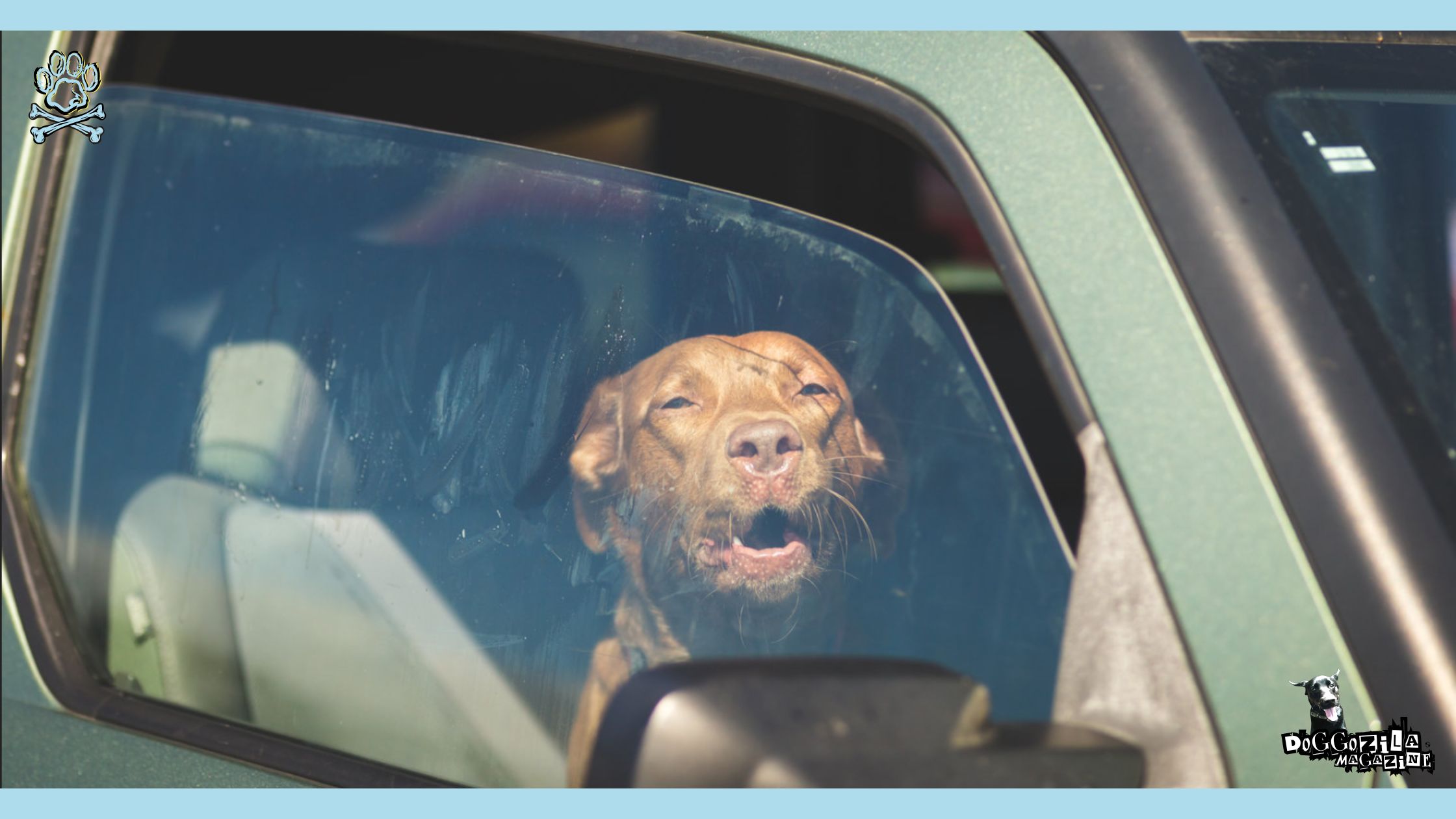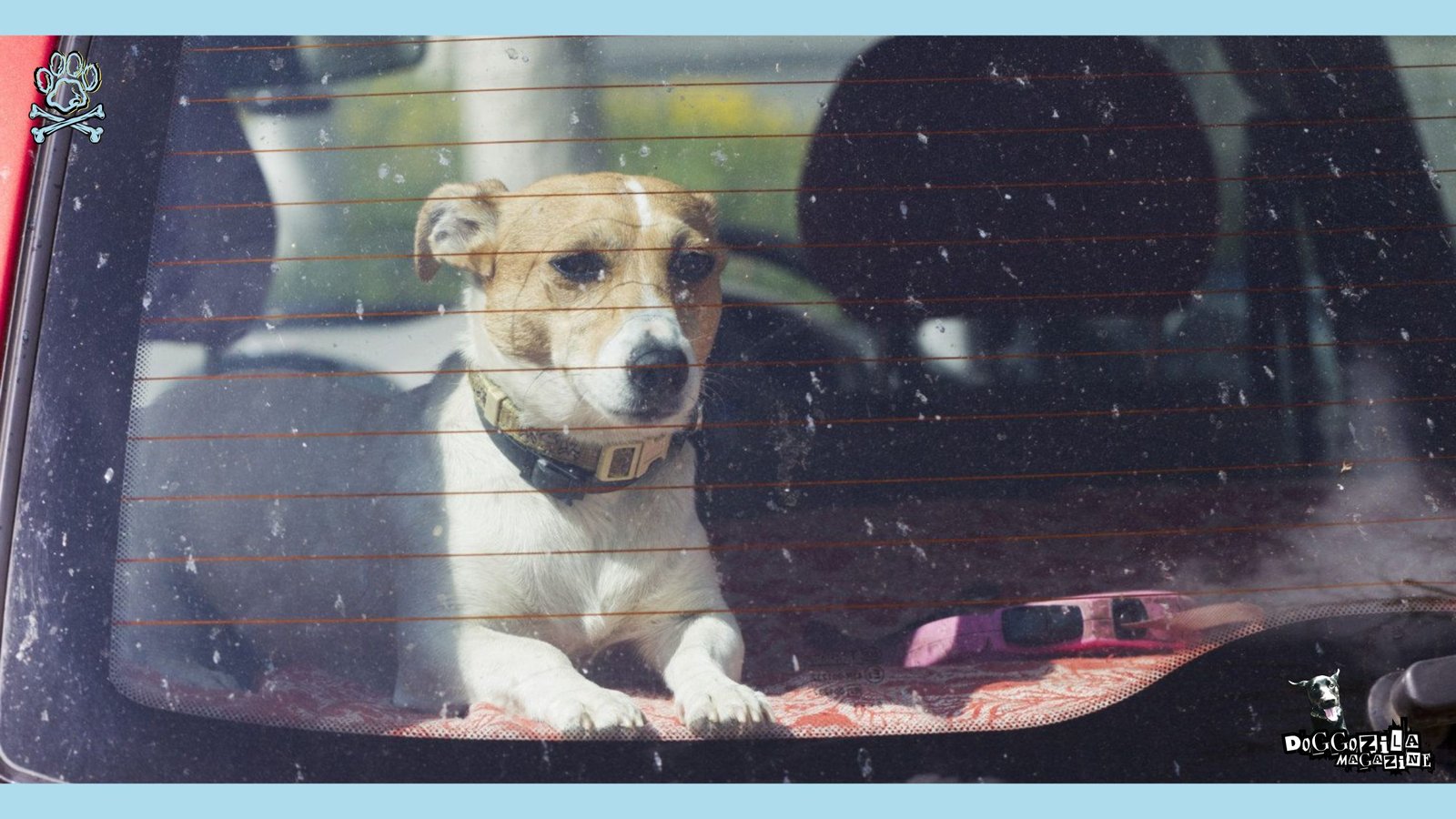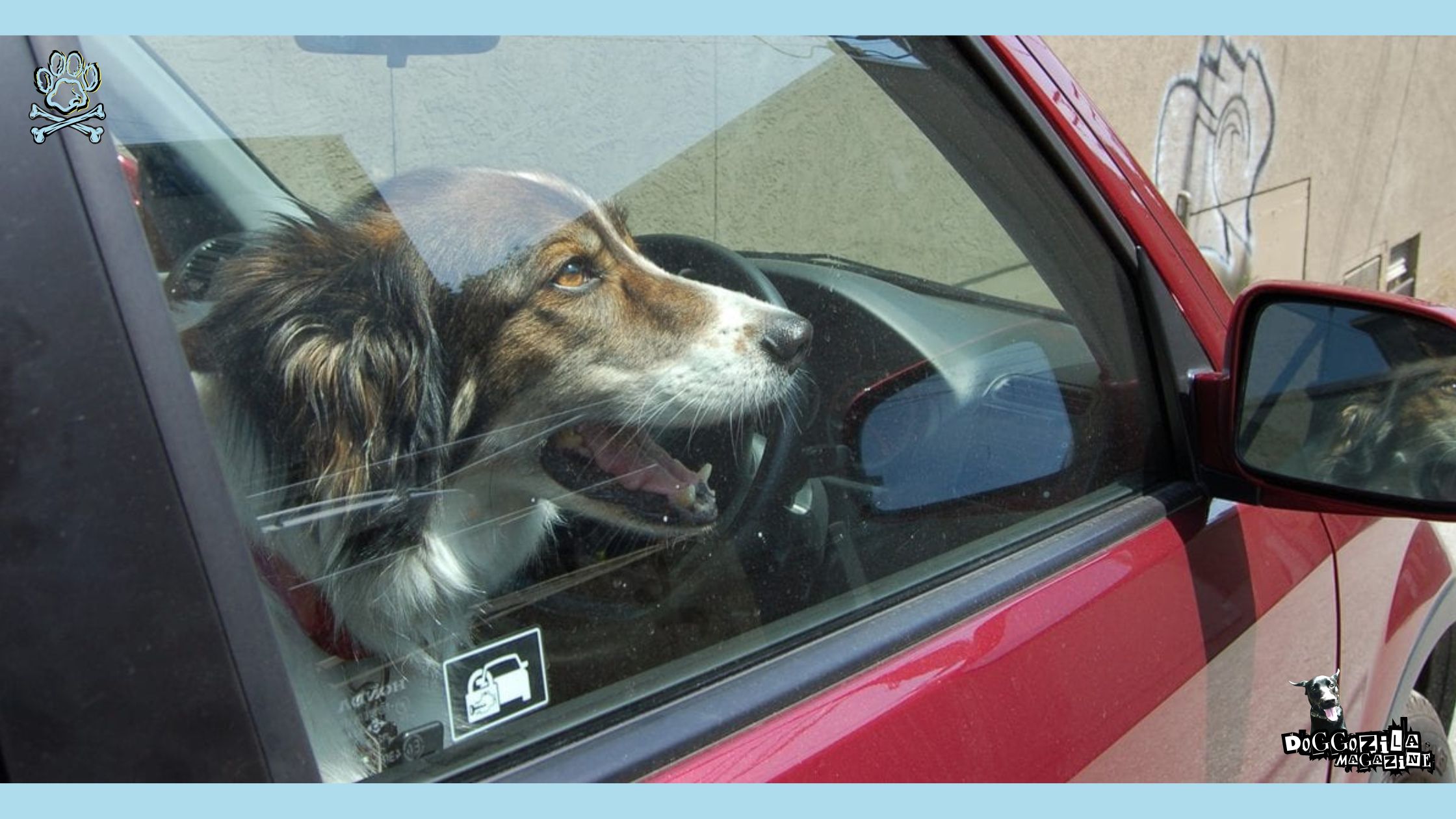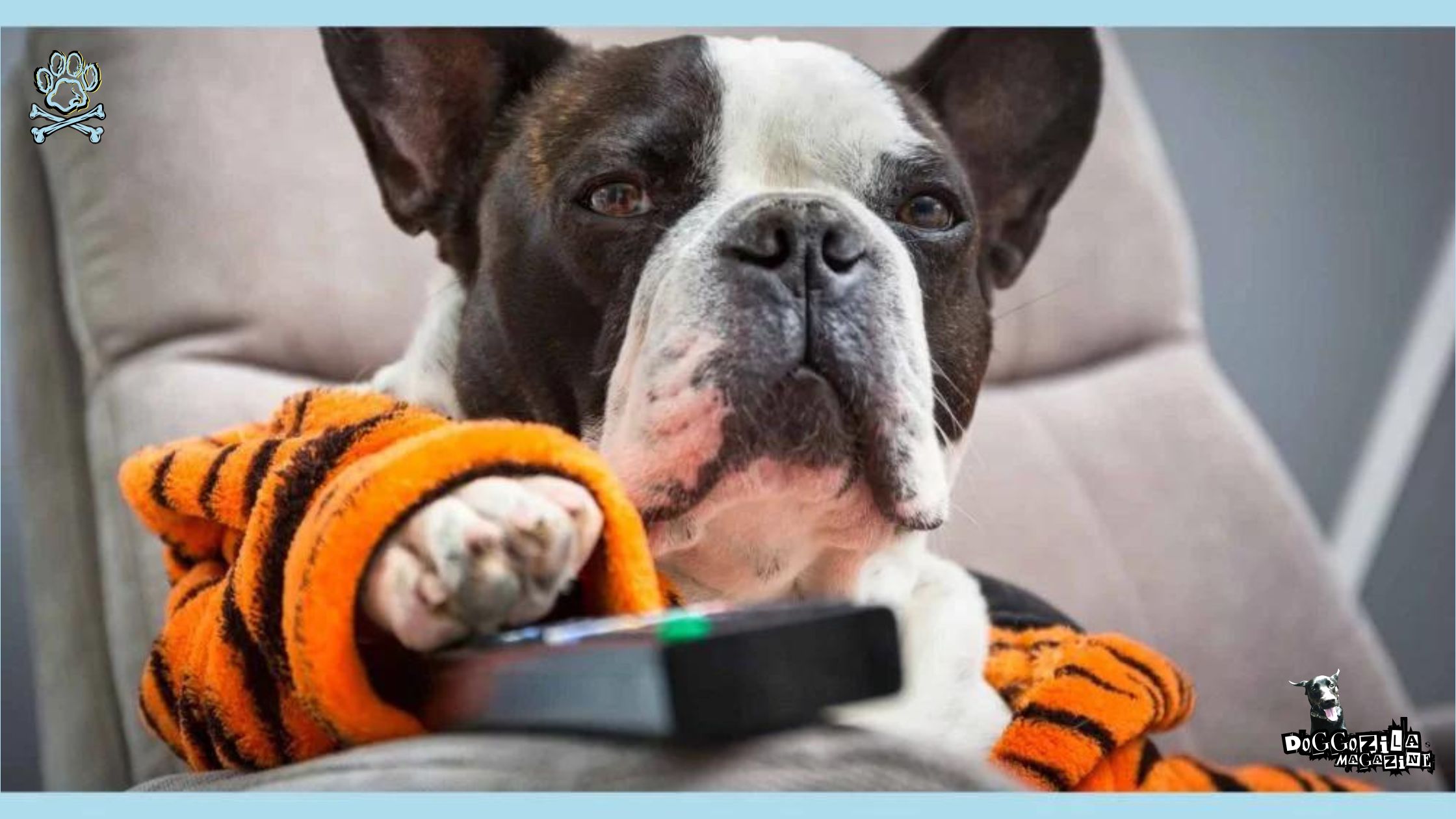
PROTECT YOUR POOCH FROM HEATSTROKE IN PARKED CARS
Are you aware of the silent danger that lurks in parked cars, especially for our beloved furry companions? The risks of heatstroke in dogs left unattended in vehicles are real and alarming. As the temperature rises inside a parked car, so does the potential danger to our dogs. Understanding the physiological vulnerabilities of dogs, particularly breeds with limited ability to regulate their body temperature, is crucial in recognizing the early signs of heat stress.
Safeguard your Dog from The Silent Killer Heatstroke
In this informative guide, we will delve into the immediate dangers of a hot car, practical steps to take in case of heatstroke emergencies, preventive measures to safeguard your dog, and legal considerations to bear in mind. Let’s navigate through vital tips and expert insights to ensure the safety and well-being of your four-legged friends in the face of heat-related risks.
Understanding Heatstroke in Dogs
Heatstroke is a dangerous health condition that occurs when your dog’s body temperature rises to a critical level. It happens when their body absorbs more heat than it can dissipate, leading to a rapid increase in core temperature. Common signs of heatstroke include excessive panting, drooling, lethargy, and even collapse.
Imagine your furry friend lounging in the sun on a hot day. While they might enjoy basking in the warmth, their body is silently struggling to regulate its temperature. Unlike humans, dogs have limited ability to sweat and rely primarily on panting to cool down.
Other Factors that Increase Heatstroke Risk
- Thick or long coats
- Obesity
- Age (very young or old)
- Certain breeds (brachycephalic)
- Pre-existing health conditions
When exposed to high temperatures without proper shade, water, or ventilation, the heat overwhelms their system. Their body temperature soars, putting them at risk of organ damage, brain dysfunction, and even death.
🔑 Key Points: Heatstroke is a life-threatening condition caused by a dangerous rise in your dog’s body temperature, requiring swift action to prevent severe consequences.

THE IMMEDIATE DANGERS OF A HOT CAR
One of the most common and preventable causes of heatstroke in dogs is being left in a hot car. Many pet owners underestimate how quickly a parked car can become a deadly oven, even on seemingly mild days.
Do not leave dogs in hot parked cars
When a vehicle is exposed to direct sunlight, its inside temperature can rise rapidly, turning it into a sweltering trap. Cracking the windows provides little to no relief, as the hot air remains trapped inside.
Imagine your pooch sitting in a parked car as the temperature climbs. Within minutes, they’re panting heavily, their body temperature skyrocketing. The metal surfaces become scorching, and the air grows suffocatingly hot. It’s an imminent danger that no dog should ever face.
🔑 Key Points: Leaving a dog in a hot car, even for a short time, puts them at severe risk of heatstroke due to the rapid temperature rise inside the vehicle.
Physiological Vulnerabilities of Dogs
Dogs have physiological differences that make them more susceptible to heat-related illnesses compared to humans. They primarily rely on panting to regulate their body temperature, which becomes less effective in hot and humid conditions.
Certain breeds, such as brachycephalic dogs (pugs, bulldogs), are at an even higher risk due to their short snouts and respiratory challenges. Additionally, dogs with thick coats, obesity, or underlying health conditions like lung disease have a harder time coping with the heat.
🔑 Key Points: Dogs’ unique physiology, breed characteristics, and health status can increase their vulnerability to heatstroke.
Recognizing Signs Of Heat Stress In Dogs
Recognizing the signs of heat stress in your dog is crucial for prompt intervention.
Watch for these red flags:
- Excessive panting
- Drooling
- Rapid breathing
- Bright red tongue and gums
- Vomiting
- Diarrhea
- Weakness or collapse
Picture your furry companion lying on the cool floor, panting heavily with a glazed look in their eyes. They might appear disoriented or unresponsive, signaling a critical situation.
If you notice these symptoms, it’s essential to take immediate action. Move your pet to a cooler location, provide fresh water, and contact your veterinarian for guidance. Swift emergency response can make the difference between life and threatening complications.
🔑 Key Points: Familiarizing yourself with the signs of heat stress allows you to recognize when your pet needs urgent help to prevent the progression to heatstroke.

IMMEDIATE STEPS TO TAKE FOR HEATSTROKE IN DOGS
If you suspect your pet is suffering from heatstroke, every second counts.
Here’s what you should do:
Emergency Response Protocol
1. Move your pet to a cool, shaded area or an air-conditioned room.
2. Offer fresh, cool water to drink, but don’t force it if they’re not interested.
3. Place a fan near your pet to help with air circulation and cooling.
4. Gently wet your pet’s fur with lukewarm (not cold) water, especially around the neck, belly, and inner thighs.
5. Contact your veterinarian immediately for further instructions and to arrange for an emergency visit.
Imagine finding your dog collapsed in the backyard on a scorching day. You quickly bring them inside, draping a damp towel over their body. As you offer water and call the vet, you keep a close eye on their breathing and responsiveness.
Remember, never use ice or extremely cold water, as it can constrict blood vessels and hinder cooling. Trust your veterinarian to provide the best possible care and treatment plan for your dog’s recovery.
🔑 Key Points: Swift and appropriate emergency response, including moving your dog to a cooler location and seeking veterinary care, is vital in cases of suspected heatstroke.
Preventive Measures to Protect Your Dog
Prevention is key when it comes to keeping your dog safe from heat-related illnesses. Here are some essential tips:
Beat the Heat Checklist
1. Never leave your pet in a parked car, even with the windows cracked.
2. Provide plenty of fresh, cool water and shaded areas for rest.
3. Limit exercise and outdoor activities during the hottest parts of the day.
4. Use pet-friendly sunscreen on exposed skin, especially on the nose and ears.
5. Consider appropriate clothing-wear, like cooling vests or booties for hot pavement.
6. Ensure proper grooming to help regulate body temperature.
Picture a summer day at the park. You pack a portable water bowl and choose a shady spot for your pooch to relax. During walks, you opt for grassy paths and avoid the sizzling asphalt. These small actions can make a big difference in keeping your dog cool and comfortable.
Remember, if it’s too hot for you, it’s too hot for your dog. By taking preventive measures and being mindful of environmental conditions, you can significantly reduce the risk of heatstroke and ensure your furry friend stays safe and healthy during the warm months.
🔑 Key Points: Implementing preventive measures, such as avoiding hot cars, providing shade and water, and using appropriate clothing-wear, is essential for protecting your pet from heat-related dangers.
Legal Considerations and Actions
Leaving a dog in a hot car isn’t just dangerous; it’s illegal in many states. If you come across a distressed animal in a vehicle, contact local authorities or animal control immediately.
Familiarize yourself with the Good Samaritan laws in your area, which may offer legal protection for taking action to save an animal in imminent danger. Document your actions and follow the guidance of first responders on the scene.
Consider contacting a local humane authority or animal hospital with AAHA accreditation for further advice on legal protocols and reporting.
🔑 Key Points: Be aware of the legal implications surrounding dogs in hot cars and follow proper protocols when addressing such situations.

HOW TO SAFELY ADDRESS A DISTRESSED DOG IN A HOT CAR
If you encounter a distressed dog in a hot car, it’s crucial to act quickly but safely.
Here’s what you should do:
Steps to Help a Dog in a Hot Car
1. Assess the situation and determine if the animal is in immediate danger.
2. Try to locate the owner by alerting nearby businesses or having the vehicle owner paged.
3. If the owner can’t be found, call local authorities (police or animal control) and provide detailed information.
4. If the situation is critical and authorities haven’t arrived, consider taking steps to safely remove the animal, following local laws and documenting your actions.
Imagine walking through a parking lot on a sweltering day and spotting a dog in distress inside a car. You quickly spring into action, seeking help from the authorities while monitoring the animal’s condition. Your swift response could be the difference between life and death.
Remember, breaking into a vehicle should be a last resort and only done with proper legal guidance. Prioritize your safety and the animal’s well-being by working with trained professionals.
🔑 Key Points: If you see a distressed animal in a hot car, prioritize seeking help from authorities while ensuring the pet’s safety and following legal protocols.
Advocating for Dog Safety and Preventing Heat-Related Incidents
As a responsible dog owner and animal lover, you can play a vital role in advocating for dog safety and preventing heat-related incidents. Here’s how:
Ways to Advocate for Dog Safety
1. Educate others about the dangers of leaving pets in hot cars.
2. Support and promote local initiatives that raise awareness about heatstroke prevention.
3. Encourage businesses to display signs reminding customers not to leave pets in vehicles.
4. Advocate for stricter laws and penalties for those who endanger animals in hot cars.
5. Share resources and information on social media to reach a wider audience.
Imagine distributing flyers at a community event or sharing a powerful video on Facebook about the risks of heatstroke in dogs. Your efforts can create a ripple effect, inspiring others to take action and prioritize pet safety. By being a voice for the voiceless and working towards legislative measures, you can contribute to creating a safer environment for all pets.
🔑 Key Points: Advocating for pet safety through education, awareness, and support for legislative measures is crucial in preventing heat-related incidents and protecting animals from harm.

WHEN OUTDOOR TEMPERATURES CLIMB: KEEPING DOGS SAFE AT HOME
Even at home, dogs can be at risk of heat illness on hot days, especially if they’re exposed to direct sunlight or lack access to shade and water.
Here’s what you can do:
Keeping Dogs Cool at Home
- Provide ample shade and ventilation
- Ensure constant access to fresh, cool water
- Use fans or air conditioning to regulate indoor temperature
- Limit outdoor time during peak heat hours
- Be cautious of hot surfaces like pavement or decking
Remember, your pet relies on you to keep them safe and comfortable, even in the cold winter. Don’t let a hot day catch you unprepared.
🔑 Key Points: Providing shade, water, and temperature control at home is essential for keeping dogs safe from heat-related risks.
Breeds at Greater Risk and How to Extra Care
Some dog breeds are more susceptible to heatstroke due to their physical characteristics or health predispositions. Brachycephalic breeds like pugs, bulldogs, and boxers have short snouts and respiratory challenges that make them less efficient at cooling down.
Dogs with thick coats, obesity, or pre-existing conditions like lung disease are also at higher risk.
If your furry friend falls into one of these categories, take extra precautions:
- Limit outdoor time during hot weather
- Provide air-conditioned spaces for relief
- Monitor them closely for signs of distress
- Work with your vet to manage any health issues
With a little extra care, you can help your high-risk pooch stay safe and comfortable.
🔑 Key Points: Recognizing breeds at greater risk and providing them with extra care and attention is crucial for preventing heatstroke.
Tips for a Cooler Environment for Your Dog
Creating a cooler environment for your dog can help them beat the heat.
Try these tips:
- Set up a kiddie pool or sprinkler for outdoor playtime
- Place cooling mats or damp towels in their favorite resting spots
- Use pet-safe ice packs or frozen treats to help them chill out
- Ensure access to plenty of shade and fresh water when outdoors
- Consider a cooling vest or bandana for walks on hot days
- Keep your home well-ventilated and use fans or air conditioning
By providing a comfortable and temperature-controlled space, you can help your furry friend stay cool and refreshed all summer long.
🔑 Key Points: Implementing creative cooling solutions and ensuring shade and water availability are key to maintaining a comfortable environment for your pet.

THE ROLE OF DOG OWNERS IN COMBATING HEATSTROKE
As a dog owner, you play a crucial role in preventing heatstroke and keeping your furry companion safe.
Here’s what you can do:
Dog Owner Responsibilities
1. Educate yourself on the risks and signs of heatstroke
2. Never leave your pet in a parked car, even for a short time
3. Provide access to shade, water, and a cool resting place
4. Limit exercise and outdoor activities during hot weather
5. Be prepared for emergencies, including power outages
6. Work with your veterinarian to address any health concerns
Imagine a scorching summer day. Instead of risking a walk on the hot pavement, you opt for indoor playtime and mental stimulation. You ensure your pet has a cool retreat and plenty of fresh water.
These simple actions demonstrate your commitment to their well-being.
By being a responsible and proactive dog owner, you become a vital partner in the fight against heatstroke, ensuring that your beloved companion stays safe, healthy, and happy.
🔑 Key Points: Dog owners play a vital role in preventing heatstroke by educating themselves, providing a safe environment, and being prepared for emergencies.
Brief Summary about Heatstroke in Dogs left in Parked Hot Cars
In conclusion, safeguarding your furry companion from the dangers of heatstroke in parked cars is crucial for their well-being. Understanding the physiological vulnerabilities of dogs and recognizing the signs of heat stress are paramount in ensuring their safety.
Immediate actions such as moving them to a cooler location and providing cold water can make a significant difference in averting a potentially life-threatening situation. By implementing preventive measures like appropriate clothing-wear and keeping dogs hydrated, you can proactively protect your pet from heat-related illnesses.
Advocating for dog safety, raising awareness, and taking legislative measures are essential steps in preventing heat-related incidents. As a responsible pet owner, it is imperative to educate yourself on the risks associated with leaving dogs in hot cars and to take necessary precautions to keep them safe.
Your furry friend relies on you for their well-being, so take action now to prevent heatstroke and create a safe environment for your beloved companion.

Thank you for prioritizing your dog’s safety and taking the necessary steps to protect them from the silent killer – heatstroke.









